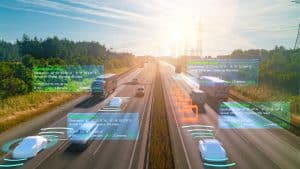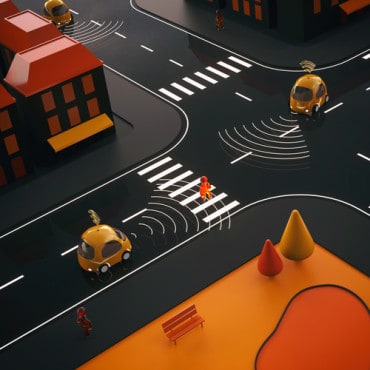
Vehicles today are edge computers on wheels, running on software that is constantly being refreshed.
Today’s autos – and the production systems behind them – are no longer gasoline-powered mechanical behemoths and Henry Ford assembly lines that churn them out. Rather, today’s vehicles are computers on wheels, running on software that is constantly being refreshed, connected to the production facilities that produced them.
![Featured Resource: Building a 5G Blueprint to Speed Deployment and Time to Revenue [View Now]](https://no-cache.hubspot.com/cta/default/8019034/9ac0cc35-9d92-4575-950f-7c8748ebbe38.png)
“The whole industry is experiencing an unprecedented level of transformation, accelerated by customer demand for electric vehicles and by recent resource shortages,” states a recent analysis from Capgemini. Mobile edge computing is a big part of this evolution. “Vehicles should in the future be able to construct data objects using IT-standard formats, decide what information to push to the cloud depending on connectivity conditions, log and store events, and make services available via APIs,” the Capgemini authors state.
See also: Technology for Good: Enabling Safety via 5G and Autonomous Solutions
Building the algorithms to support the new connected car is a challenge the industry now faces. “Huge volumes of data are needed to create and test them,” Capgemini reports. “And when the algorithms go live, they have to operate at the edge – in the vehicle, rather than in the cloud, since safety cannot depend on connectivity, posing additional challenges.”
Toyota, Intel, and Denso are among the companies that have formed the Automotive Edge Computing Consortium (AECC), which aims “to develop the infrastructure needed to support the skyrocketing data demand from connected vehicles. The objective is to develop
an ecosystem to support emerging services such as intelligent driving, creation of maps with real-time data, and driving assistance based on cloud computing.”
![Featured Resource: Building a 5G Blueprint to Speed Deployment and Time to Revenue [View Now]](https://no-cache.hubspot.com/cta/default/8019034/9ac0cc35-9d92-4575-950f-7c8748ebbe38.png)
AECC estimates that data volume between vehicles and the cloud “will balloon to 10 exabytes per month by 2025 – approximately 10,000 times larger than today’s volume.” The consortium is promoting the adoption of data-driven approaches through “increasing network capacity to accommodate automotive big data by means of edge computing and more efficient network design. In the same way, time-critical applications, such as those in a smart factory, need to have decision-making capability available at the edge – following the ‘4-walls principle’ of keeping all critical resources of a process local to the production site.”
See also: New Technology Brings Fully Autonomous Driving Closer
In combination with IoT, AI, and edge computing, 5G connectivity is the catalyst for technology-driven, networked business innovation, the report states. “5G connectivity has the power to transform the industry in all sorts of ways. Among the most exciting are collaboration and connectivity by vehicles with other vehicles (V2V), with infrastructure (V2I), and with any other element of their environment (V2X).” Private cars (a.k.a., computers on wheels) could, in essence, operate in “autonomous trains” that are aware of each other’s proximity. The report’s authors note how Ericsson and Volvo Cars “have trialed the use of 5G connectivity to keep maps constantly updated with real-time information to aid future autonomous driving operations and an understanding of the environment beyond the range of the vehicle and its sensors.”
It isn’t just private vehicles that can benefit – connectivity can change the shape of trucking. “Think about truck platooning, where a group of trucks progress together along a highway. With appropriate connectivity, one driver can control the whole fleet, steering the first truck while the others follow closely. Fuel use is reduced too as most of the trucks are less exposed to the wind.”
The report notes that 5G is not widespread enough to support on-road scenarios yet, but is gaining widespread adoption in auto manufacturing sites, “with compelling use cases like VR-enabled training and coaching.”
Contextual information will be generated from multiple sensors in vehicles. “For example, if the driver’s eyes show signs of tiredness, then recommending a place to rest would be appropriate even if they have only just left home.” Plus, “if an electric vehicle’s battery will soon need charging, an app could modify the engine and environment parameters to save energy so that the driver can reach a more distant charging station with reduced queuing time and less impact on the environment.”
Edge and 5G computing are seeing a range of interesting applications across production floors. Now, that same technology is being condensed into the vehicles being produced, keeping these vehicles connected with the resources of the original manufacturer. Thus, the modern vehicle is truly are computers on wheels.
![Featured Resource: Building a 5G Blueprint to Speed Deployment and Time to Revenue [View Now]](https://no-cache.hubspot.com/cta/default/8019034/9ac0cc35-9d92-4575-950f-7c8748ebbe38.png)







